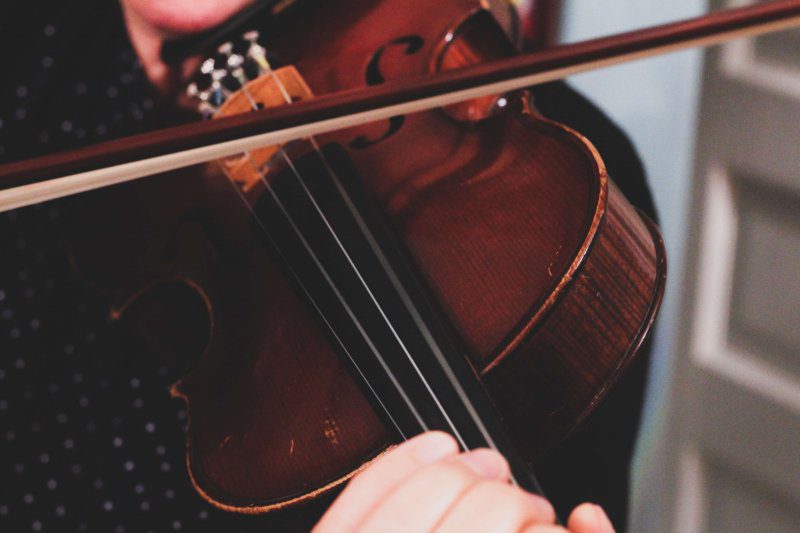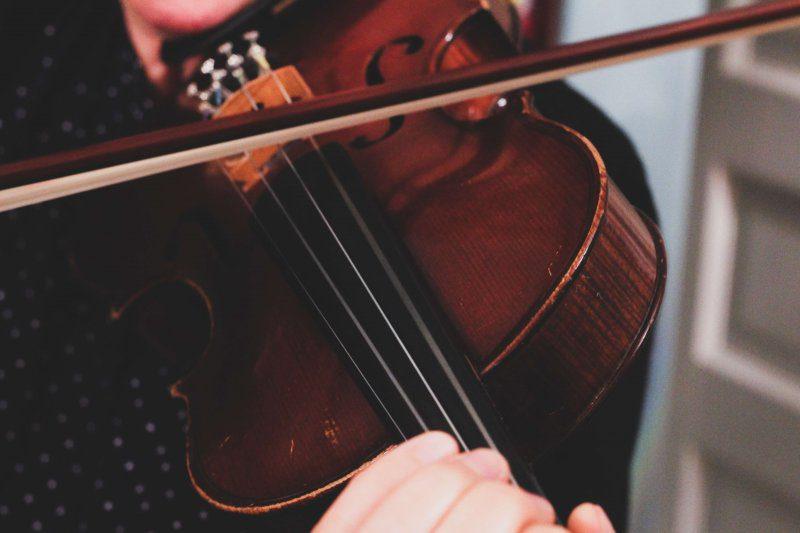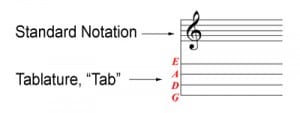 Tablature is a form of musical notation that makes reading music easier for fretted and string instruments like guitar, bass, and violin. The premise is operationally-based, meaning that rather than showing rhythm, duration, and pitch, violin tabs will show the player where and when to place their fingers on the instrument.
Tablature is a form of musical notation that makes reading music easier for fretted and string instruments like guitar, bass, and violin. The premise is operationally-based, meaning that rather than showing rhythm, duration, and pitch, violin tabs will show the player where and when to place their fingers on the instrument.
For an improvising musician, tabs allow you to improvise while staying within the chord structure of a song. We most often use tablature-style notation when notating pop music. It’s often seen in folk and bluegrass, as well. For the beginning violinist, tabs can help you learn positions and individual notes quickly and efficiently, but ultimately, it’s important to learn to read standard musical notation as well.
Let’s look at the origin of violin tabs, how they work, the advantages and disadvantages of using them, and how to read them.
What Are Violin Tabs?
Violin tabs make playing the violin much easier. Each song consists of a staff, showing the notes of the song, over a violin tab, showing the finger placement for each note.
Interested in the origin of violin tablature? They directly descended from lute tablature. During the Renaissance and Baroque periods, tablature was common. There were three main varieties: French, Italian/Spanish, and German tablature. The French variety was the most popular, and modern-day tabs evolved out of this variety.
Violin tabs were also often used for other instruments during this period. Keyboard tablature was widely used in Germany from the mid-15th century until the mid-18th century. Most music for the lute and other plucked string instruments were originally written in tablature. Many modern players of these baroque instruments still prefer tablature over standard musical notation. They often use copies of the original manuscripts, handwritten copies, or modern computer-generated tablature versions.
How Do Violin Tabs Work?
The standard musical notation shows each note’s rhythm, pitch, and duration. It may also include dynamics and articulation markings, up-and down-bow markings, and style notations.
On the other hand, violin tabs show where and when a finger should be placed to start a note, rather than explicitly showing the note on a staff. Rhythmically, tablature shows when to start a note. However, no notation often shows where to stop the sound. As a result, the note duration is usually the performer’s responsibility.
Also, violin tablature depicts the four strings rather than actual notes. The tablature starts at the lowest open note or string on the bottom (the open G) and goes to the highest on the top line (the open E). Numbers are placed on these lines to represent the left-hand fingers on the strings. This makes it easy for someone who can’t read standard notation to play.
Setting Up Your Violin – Position Markers
To use violin tabs, most players like to make “fret” marks on the neck of your instrument with liquid paper or small pieces of tape. These marks indicate where to put your fingers to play specific notes.
On a full-sized violin, place the markers as follows:
- 1st marker – 1 and 7/16 inches from the nut
Your violin will have 4 “frets” when you’ve finished. Each fret corresponds with a finger on your left hand. The finger numbers are 1 for the index finger, 2 for the middle finger, 3 for the ring finger, and 4 for the pinky. Once you set up your instrument, you can get started!
Ready to Practice?
Understanding violin tablature makes it fun and easier to play like a pro! Here’s an example using the first four measures of “Twinkle Twinkle Little Star”:
The “0” denotes an open string. The 1 on the E string means that you place your first finger on the first fret on the E string, and so on. As you can see from the example, the violin tab eliminates the need to read music. This allows you to pick up and play the instrument almost immediately. Learning to read tablature is an excellent skill to develop if you are interested in playing the instrument quickly. Violin tabs are great for learning specific genres of music like folk, bluegrass, and pop.
Enjoy Learning Violin Tabs for Beginners!
There are hundreds of websites online for you to find free tabs for various violin music. If your goal is to learn how to play the violin, tablature is a great way to get started. With some practice, you’ll eventually make the connection between the notes on the staff and the tablature representation.
However, it’s important to learn to read standard musical notation as you progress in your studies. While tablature can teach you melodies and songs, you’ll need to learn and understand dynamics, articulation, and stylistic techniques such as vibrato and pizzicato. This ensures you’ll truly get the full range out of any piece of music.
The best approach is to study with a qualified violin teacher and learn how to play to the absolute best of your ability. A good teacher can guide your musical journey and work with you to develop your skills and understanding of violin tabs for beginners. This will genuinely open you up to the beauty of playing the violin!
Photo by theilr
Megan L.



